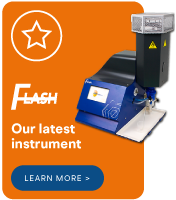60 years of the laser - from first invention to modern techniques
- BWB Technologies
- Mar 2, 2022
- 2 min read
Updated: Mar 11, 2022
Lasers have certainly come a long way since the basic chromium-doped ruby examples were invented in 1960.
60 years, this small beam of red light is considered one of the most important discoveries of modern times. But how has it changed from its first invention to now.
Lasers emit a constant beam of light of a specific wavelength. While this wavelength can be slightly engineered, the material used is the main factor in the output wavelength of light.

What do we use lasers for today?
Modern-day lasers are around us constantly. They are beneath our feet in fibre optic cables, and in barcode scanners in shops.
You’ll also find them in laser printers, space communications, weapons guidance systems and countless other applications.
Without the development of the laser, we would not be able to be where we are today as a society.
Lasers are widely used today for material processing in manufacturing, such as for drilling, cutting and welding.
Other uses include fibre-optics, DNA sequencing instruments, laser surgery and skin treatments.
What are the applications of modern-day lasers?
The common type of laser has major differences from the older solid-state lasers, such as the ruby one mentioned above.
Since their conception in 1960, gas lasers have greatly evolved. The initial discovery was of a Helium Neon laser. When we think of lasers and their function, our minds often go down the sci-fi route.
Instead, let’s start with some of the most powerful laser equipment possible today.
A carbon dioxide cutting laser is capable of emitting light at 10.6 micrometers. These are extremely high energies which are capable of cutting and welding steel.
Meanwhile, chemical lasers - such as the hydrogen fluoride laser - emit light at wavelengths of 2,700 to 2,900 nanometers.
The reaction which occurs in the laser chamber is between hydrogen and the combustion products of ethylene in nitrogen trifluoride. This produces a high-energy beam of light.
However, these different laser techniques do not make solid-state lasers obsolete.
What can be added to crystal structures to produce laser light?
Neodymium is a common addition to crystal structures to produce laser light. For instance, the yttrium aluminium garnet crystal laser is doped with neodymium.
This laser light is installed at the Starfire Optical Range for use as a space telescope.
The Range is a United States Air Force research laboratory on the Kirtland Air Force Base in Albuquerque, New Mexico.
The telescope sends a beam of light off to detect emissions of light from distant stars. This allows researchers to track stars’ content, in hope of giving us signs of life or habitability from a star's elemental makeup.
Even now, scientists do not think we are at the limit of what we can do with laser light. What the future of laser light holds could change the world as we know it.






